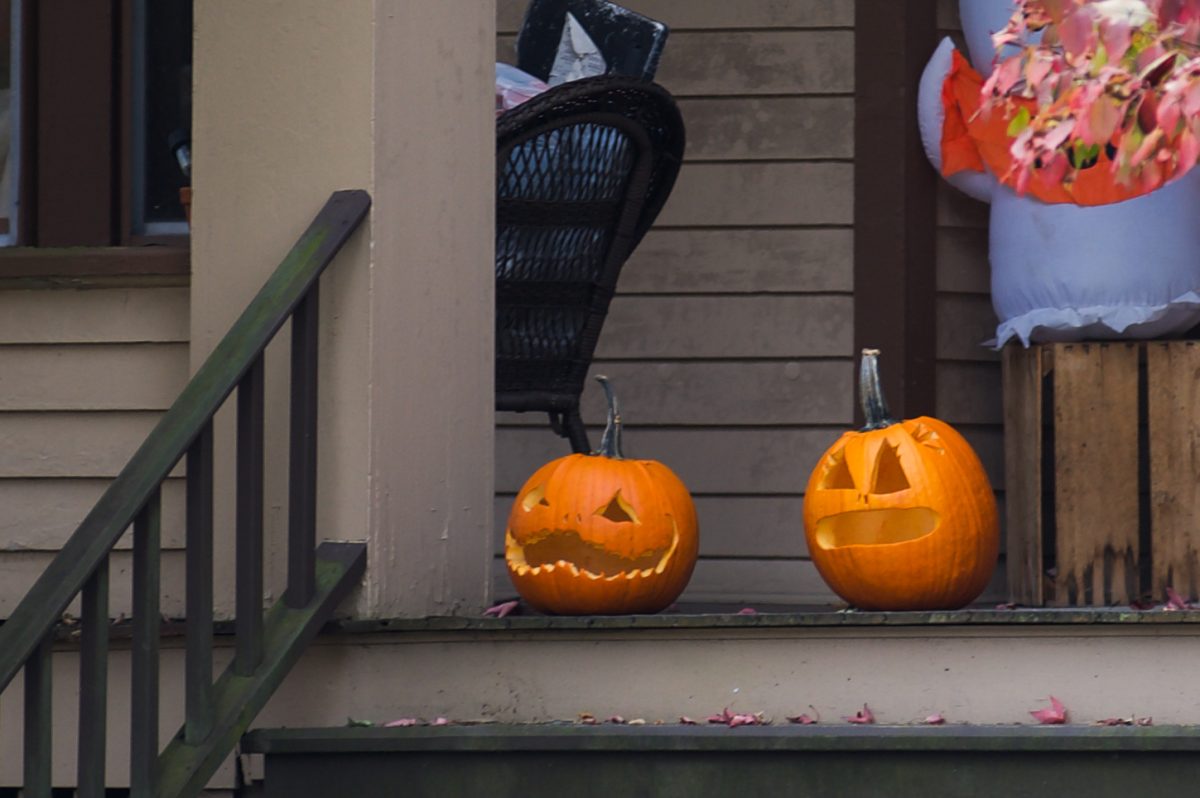From 6–7:30 p.m. on Tuesday, the children of Oberlin will scour porches across town in search of candy as they recite the classic line, “trick or treat.” Though the tradition of trick-or-treating is not unique to Oberlin, the festivities prove the closeness of the community.
Some Oberlin students remember other midwestern trick-or-treating traditions. In cities like Des Moines, Iowa, and St. Louis, Missouri, the only thing stopping kids from getting candy placed in their pillow case, pumpkin basket, or other make-shift candy collector is a clever joke. College second-year Zahra Stevick recalls her experience with trick-or-treating in St. Louis as normal except for one aspect: the obligatory jokes.
“It’s like normal trick-or-treating, but when you get to the door, they will ask you for a joke,” Stevick said. “And once you give the joke, they’ll give you candy. And sometimes, they’ll give you more candy if your joke was funnier, but most of the time, they give [it out] pretty [evenly].”
This tradition started around the Great Depression as a way to “curb hooliganism,” according to NPR in a story from 2011 about St. Louis’s relatively unknown tradition. What’s commonplace for one midwesterner may not be commonplace for another. College first-year Asa Rosen-Jones grew up in Oberlin trick-or-treating on Prospect Street, near his house.
“Around my neighborhood there’s this [image in my head] of all these streets being filled up with kids, the leaves are half on the ground and all changing colors,” Rosen-Jones said. “It’s really cool to me [and] it’s really pretty.”
Not only do many find the southwest quarter of town, around Prospect Street and Reamer Place, beautiful during this time, but the candy jackpot also lays here, according to Oberlin native and College first-year Nate Malakar.
“[I would] always go to the same neighborhood near Prospect [Street to trick-or-treat] because there’s a lot of houses, [which means] a lot of candy,” Malakar said. “It’s a more well-off area. A lot of professors live around there.”
Having a well-off quarter of town is typical. Kids gravitate toward these neighborhoods because the size of the candy typically increases. While Oberlin has this, the community is small enough to create a classically cozy trick-or-treating experience.
“One nice thing about living in Oberlin is that it’s a really sweet community,” Assistant Professor of Politics Jennifer Garcia said. “And when we trick-or-treated with our kids, we saw other professors trick-or-treating, or we went to their houses. It’s just fun to see people in a different light [whereas when you] see them more in their institutional role.”
Along with the hour and a half allotted to trick-or-treating on Oct 31, another town tradition presents itself: Track-or-Treat. Track-or-Treat began in 2013, and Oberlin Athletics has hosted this event every year since, except in 2020, accounting for inclement weather. This event is for children and their families to walk around the Oberlin track, visit the different stations that are set up, and receive candy alongside their community.
College second-year Ryley Steggall grew up in Oberlin and now runs for the College on the track and field team. She grew up attending Track-or-Treat and now hands out candy to the kids in attendance.
“Track-or-Treat is super cool,” Steggall said. “All of the sports teams on campus have a little booth around the outside track, and all the little kids come and trick-or-treat. I had a conversation with my coach last year [where] I was like, ‘Oh my god, it’s a full circle moment because I used to do Track-or-Treat, and now I’m giving the [kids] the candy at Track-or-Treat.”
Garcia experienced last year’s Track-or-Treat with her 4-year-old son Benjamin.
“[At Track-or-Treat they had a GoGo squeeZ that] had dinosaurs on it,” Garcia said. “[It was] great because it has vegetables in it, and I was able to convince my son that that’s a treat now. I’ll buy them and he’ll be like ‘Yeah, I’ll have a dinosaur applesauce.’ So I really appreciated that.”
Hailing from California, Garcia found the window of time on Halloween evening set for trick-or-treating unsurprising given that Oberlin is a relatively small town. Regardless, it was quite different. This window doesn’t diminish the fun of Halloween, it only shows how tight-knit the community of Oberlin is. Growing up, she, along with many others, would knock on doors or ring the doorbell and wait for someone to come to the door to bombard them with the words “trick or treat.” In Oberlin, it seems that the culture is a little different.
“It seems like there’s a norm here to sit outside of your house while handing out candy,” Garcia said. “It’s actually kind of nice. There’s a little bit more of a community feel.”












